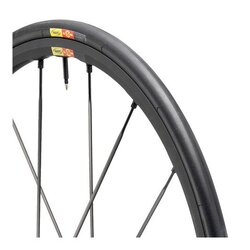Hi,
The best tyre pressures are not the biggest number on the sidewall. They depend
on rider weight (mainly, unless touring with loads of kit). Usually the front is 10%
to 20% lower pressure than the back depending on the type of bicycle.
I weigh about 75kg and the right tyre pressures on my bike for me would
be too low for someone who weighs 125kg, though the right pressures
for that rider might still be within the pressure ranges on the tyre.
If ~ 100psi works for you on 23mm tyres then ~ 70psi is about right
for 28mm tyes, irrespective of the 28mm tyres maximum pressure.
http://www.bikequarterly.com/images/TireDrop.pdf
Outlines the principles. Pressure depends on tyre width and weight.
Skinny tyres tend to be underinflated, fat tyres overinflated.
Heavy types should avoid skinny tyres. Big numbers on sidewalls
for the tyre width mean they can handle heavy types / heavy loads.
The fastest lightest tyres will not have big numbers for their width.
Blindly inflating tyres to the maximum pressure on the sidewalls
means you don't really understand your optimum tyre pressures,
that give good rolling and maximise comfort on bad roads, making
you faster. Hard tyres on bad roads feel fast, but they simply are not.
e.g. my folder has a lower max rated rear tyre than the front.
Whilst the rear is run a bit lower than its maximum the front
is run nowhere near its maximum, 20% lower than the rear.
(Small wheels are run harder than bigger wheels, for the
same tyre width, i.e. less tyre drop, to improve rolling.)
47mm tyres, 45 psi rear and 35 psi approximately
e.g. My road bike has a 30mm rear and a 32mm front.
The rear is run nowhere near maximum and the front
is about 20% lower (normally about 10% for most) but
the front is fatter and therefore needs less pressure.
Again the front is rated higher than the back tyre,
and I typically run it a way below the maximum,
around 50 psi whilst the maximum is 85 psi.
(Rear is about 65psi.)
rgds, sreten.
Schwalbe ? They tend to go higher than the above link, see page 30 :
http://www.schwalbe.co.uk/_webedit/uploaded-files/All Files/Technical Info.pdf
Fact is optimum pressure depends on the quality of the roads you ride on,
the worse the roads on average, the better you are with lower pressures.



